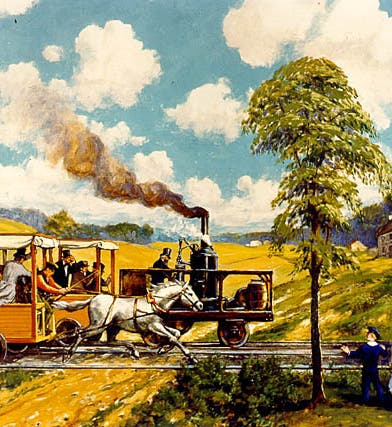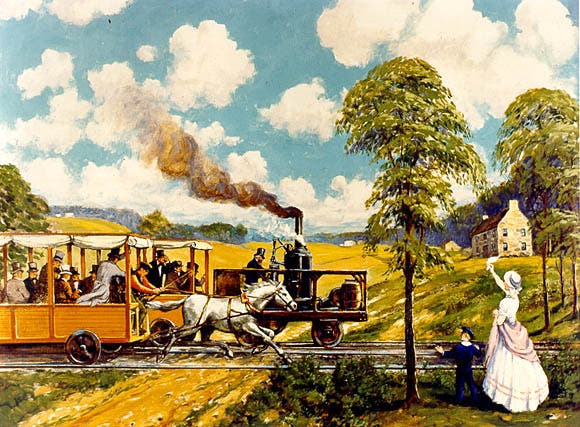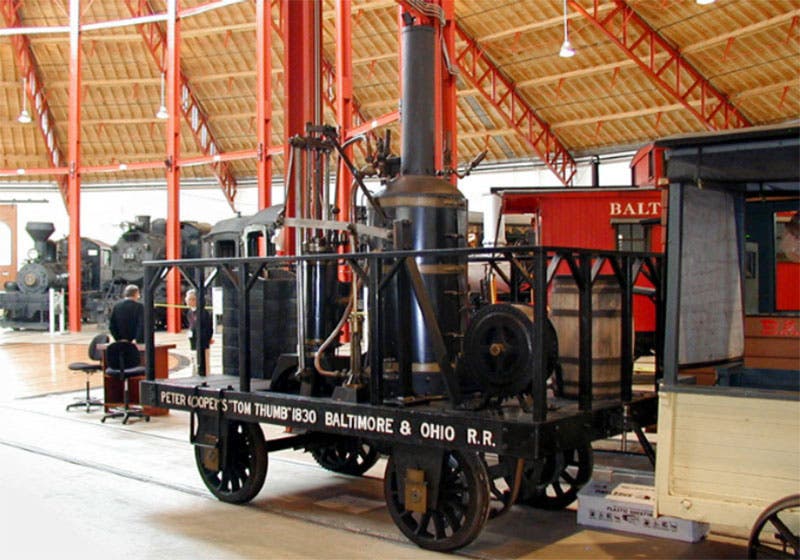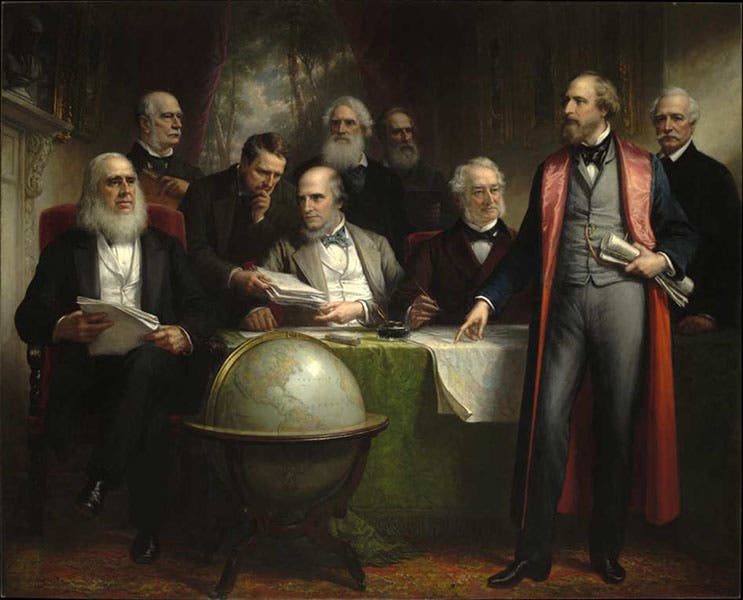Scientist of the Day - Peter Cooper
Peter Cooper, an American inventor and industrialist, died Apr. 4, 1883, at age 92. Cooper first came on the engineering scene in 1830, when he assembled from spare parts a locomotive that he called Tom Thumb, and on behalf of which he challenged a horse-drawn rail car to a race, which took place on Aug. 28, 1830 (first image). Tom Thumb lost the race (the caption to our first image notwithstanding), due to mechanical problems, , but he won the marathon, since the locomotive’s superiority was evident, and the Baltimore and Ohio Railroad decided to put their money on steam locomotives. Their rapid expansion enabled them to buy iron rails from Cooper's iron works in Maryland, which was the whole idea behind Tom Thumb in the first place. In the early 20th century, the Bureau of Public Roads (now the Federal Highway Administration) commissioned a painting of the race by their staff artist Carl Rakeman (as well as a hundred other events in highway and rail history). You may see them all here. The original Tom Thumb does not survive, but in 1927 the Baltimore and Ohio Railroad commissioned a replica as best they could (there are no images of the original) and it is a popular attraction in their Museum in Baltimore (second image).
Cooper became quite wealthy, and in 1854, he was one of five men invited by Cyrus Field to a meeting in Gramercy Park (where both Field and Cooper lived) to finance a company to lay a telegraph cable across the Atlantic Ocean. The enterprise was successfully concluded in 1858 (although the cable soon failed, and another had to be laid in 1865-66). Because of his willingness to fund innovative American technological ventures, Cooper is prominently included in several paintings that commemorate American entrepreneurs. The first, called Men of Progress, was painted in 1862 by Christian Schussele, and is now in the National Portrait Gallery at the Smithsonian Institution. We show you the Wikimedia version, because it is brighter (if artificially so) and allows you to make out the faces (third image). Cooper is the one just left of center, with the full mutton-chops and beard, leaning over Charles Goodyear. Others in the portrait include Samuel Colt, Cyrus McCormick, Elias Howe, and Samuel F.B. Morse. If you go to this Wikimedia commons page, there are mouse-over boxes that allow you to identify each figure. If you wish to see the reproduction at the National Portrait Gallery website, here is that link.
The second painting we show here is called The Projectors and was painted in 1895 by Daniel Huntington to honor the first Atlantic cable effort of 1857. It shows Cooper seated at the far left, with Samuel F.B .Morse at center rear (with a full white beard), and Cyrus Field standing at the right. The painting is in the New York State Museum (fourth image).
Cooper also founded the Cooper Union for the Advancement of Science and Art in New York City in 1859, the first tuition-free school in the country, I do believe, and his name also is carried on by the Cooper-Hewitt Museum of Design in New York City, founded by three of his granddaughters in 1897, and now part of the Smithsonian Institution.
William B. Ashworth, Jr., Consultant for the History of Science, Linda Hall Library and Associate Professor emeritus, Department of History, University of Missouri-Kansas City. Comments or corrections are welcome; please direct to ashworthw@umkc.edu.









![Using an astrolabe to measure the depth of a well, woodcut in Elucidatio fabricae vsusq[ue] astrolabii, by Johannes Stöffler, 1513 (Linda Hall Library)](https://assets-us-01.kc-usercontent.com:443/9dd25524-761a-000d-d79f-86a5086d4774/a998eb50-55d2-4a88-ace2-a50aa5fa86e7/Stoffler%201.jpg?w=210&h=210&auto=format&fit=crop)
